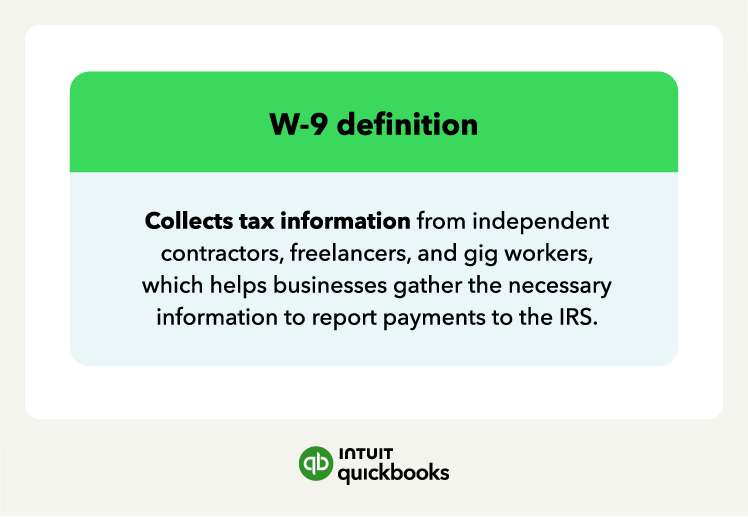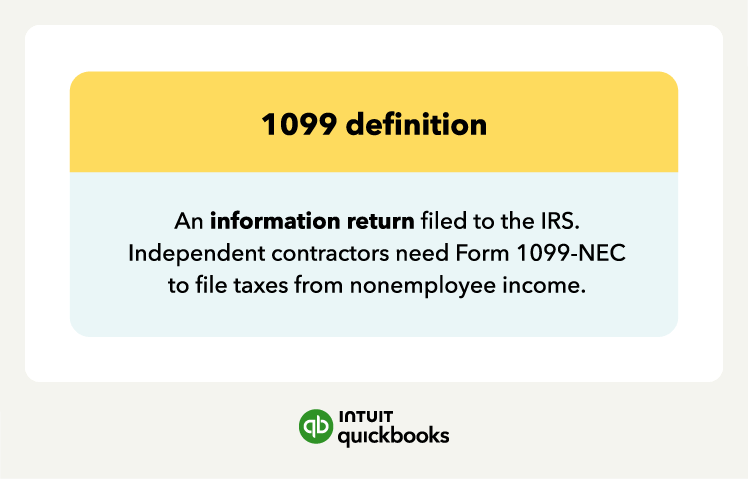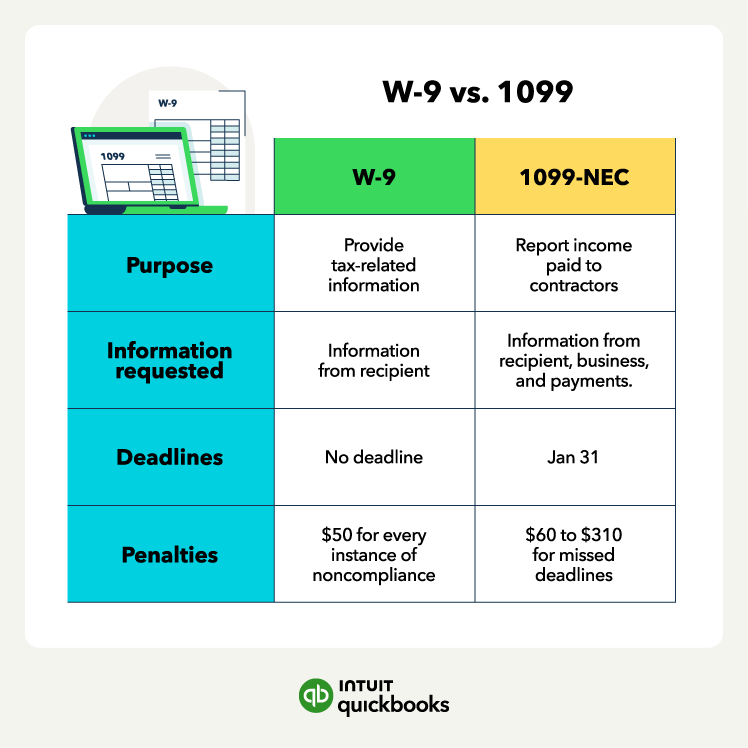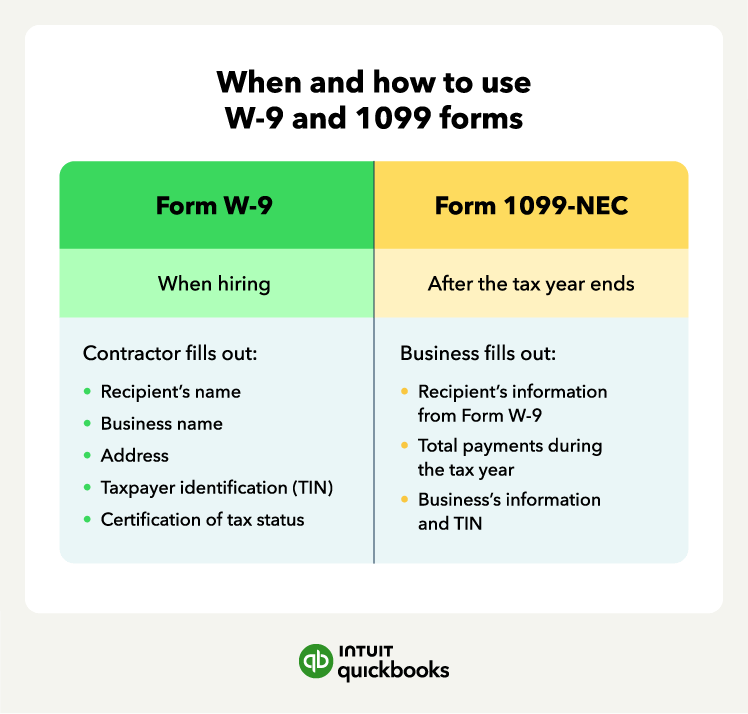How to complete the 1099 form
The 1099 form is filled out by you, as the business owner. The information included in the contractor’s W-9 will help you complete this form.
Step 1: Obtain the Correct 1099 Form
Ensure you have the correct version of the 1099 form. For most contractor payments, you'll need the 1099-NEC (Nonemployee Compensation). You can get these forms from the IRS or an office supply store. Tax software programs like QuickBooks may have pre-printed 1099-NEC forms.
Step 2: Gather Contractor Information
Use the W-9 form provided by the contractor to collect their full legal name, address, and Taxpayer Identification Number (TIN) (usually their Social Security Number or Employer Identification Number).
Step 3: Fill in Your Business Information
In the top section, where it asks for “Payer” information, you'll enter your business's name, address, and Employer Identification Number (EIN) or Social Security Number if applicable.
Step 4: Enter the Contractor's Information
Using the details from the W-9, input the contractor's full legal name, address, and TIN in the relevant boxes.
Step 5: Report the Payment Amount
In Box 1 (Nonemployee Compensation), enter the total amount you paid the contractor for their services during the tax year. Make sure this is the total paid if it's over $600.
Step 6: Federal Income Tax Withheld (if applicable)
If you withheld any federal income tax from the contractor’s payment, enter that amount in Box 4. If you didn’t withhold any tax, leave it blank. Contractors are typically responsible for their own tax payments, so in most cases, this would be left blank.
Step 7: Fill in Other Applicable Boxes
Fill out any other applicable boxes if necessary (depending on the type of payment). However, for most contractors, Box 1 and Box 4 are the most relevant fields.
Step 8: Complete the Copy Information
- The 1099 form consists of several copies:
- Copy A: Send this to the IRS.
- Copy B: Send this to the contractor.
- Copy 1: If your state requires it, send this to your state tax agency.
- Copy 2: Give this to the contractor if they need it for state tax filing.
- Copy C: Keep this for your own records.
Step 9: Send the Forms
Mail Copy A to the IRS by January 31st of the following year. You can also file electronically through the IRS’s online system if you have multiple forms. QuickBooks also offers assistance with 1099 e-filing.
Mail Copy B to the contractor by January 31st as well.
Step 10: File Form 1096 (If Filing by Mail)
If you’re submitting 1099 forms by mail to the IRS, you’ll also need to submit a Form 1096, which summarizes the 1099s you're submitting. Fill out this form and mail it with the 1099s to the IRS.

















